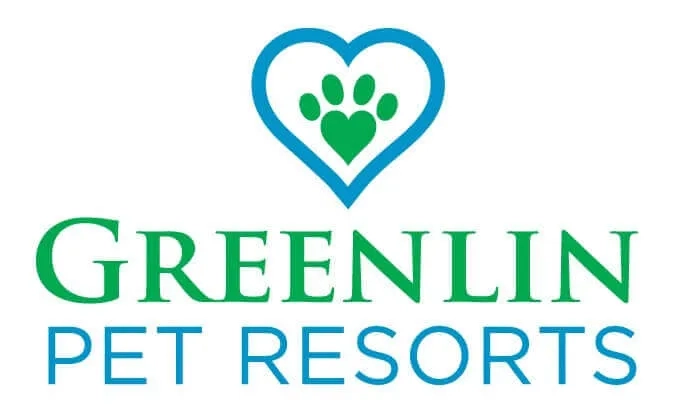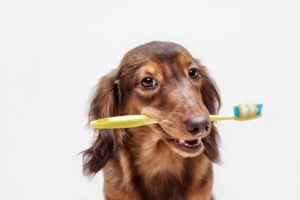How to Help Your Pet Keep Healthy Teeth
Dental care is one of the absolute most important aspects of pet ownership. Unfortunately, dental health can also be something that escapes undetected, unless the owner knows how to keep an eye on it. While problems with a pet’s skin and coat can be obvious, for example, dental issues can hide obvious symptoms, leading to health problems that can compound over time if left untreated.
“Untreated dental disease can cause tooth loss, and it can lead to painful abscesses and systemic infections throughout your dog’s entire body,” cautions the American Kennel Club. “This is always bad news, especially when it comes with an increased risk of permanent jaw damage and heart disease.”
Cats as well as dogs are susceptible to these sorts of problems, but not if you take good care of their chompers! Here are some tips to help you not only keep your pets’ teeth clean but also keep a watchful eye out for developing problems.
Get Your Pet Used to Regular Teeth Brushings
The absolute gold standard in pet dental care is learning how to brush their teeth yourself. Ideally, this will be done daily.
“Brushing your cat or dog’s teeth every day will promote good oral health and prevent potentially expensive surgeries down the road,” suggests the American Animal Hospital Association.
But, that’s admittedly unrealistic for some folks. Luckily, 2-3 times a week can still go a long way towards keeping your pet free from dental problems in between professional cleanings.
It can be tricky getting your pet used to regular brushings, but the solution is to make it a part of their routine. Hill’s Pet Food recommends starting slow. At first, just work on desensitizing your pet to having their mouth opened and touched.
“First, touch his muzzle and practice rubbing your finger along his teeth and gums. Once he can handle this — while staying calm and relaxed — introduce the toothbrush. Let him smell it, and very gently rub it on his teeth. This process may take a few days for each step. Go slowly, and don’t rush your pet. After all, you don’t want him to develop anxious or negative feelings about this routine.”
Use a 45° angle when brushing to get the best results on plaque removal, says Dr. Phillips Animal Hospital in Orlando.
Note that while it may be more difficult to brush small dogs’ teeth, it is even more important for them. The small space in their mouth means that abscesses and the spread of periodontal disease is more likely, so try to make frequent brushings part of their routine.
Brushing Cats’ Teeth
It may sound like it takes a brave soul to brush their own cat’s teeth, but the truth is that it is an important barrier to get around. Regular brushings are very important to a cats’ health. Cats can tend to hide their tooth and mouth issues better than dogs, making it possible for issues to develop — especially if they aren’t getting regular professional cleanings.
One trick is to start early when they are young. “Adult cats can be pretty resistant to having their teeth cleaned, so it’s a good idea to get them used to this process and to having your fingers in their mouth from when they’re kittens,” says Australia’s RSPCA Pet Insurance.
VCA Hospitals recommends starting the routine with a cotton swab dipped in canned tuna juice. This won’t do a great job at removing plaque, but it will get your cat used to the procedure. You can then move onto actual toothbrushes.
Use Pet-Specific Toothpaste
Toothpaste intended for humans contains quantities of chemicals that are safe for people but toxic to pets. Always brush pets’ teeth with vet-recommended toothpaste products intended specifically for dogs or cats. Best of all, they can have flavors your pet will appreciate, like chicken or fish!
Using Dental Wipes
Many pet owners find dental wipes handy and easier to use than a toothbrush. Brushing with a dog or cat toothbrush will remove more plaque, though, so don’t rely on wipes for the pet’s entire dental routine.
Teeth Cleaning Treats & Toys
Some toys and treats are great for rubbing away plaque and removing tartar! They not only give animals delight, but they can also reduce the risk of dental issues in between professional cleanings. Nylon bones and other tooth-healthy chew toys can be great for dogs, for example.
Treats like Greenies are also available for dogs and cats. These treats are often hards and big enough to force the animal to crunch on them, scrubbing away plaque in the process.
Avoid Tooth-Damaging Toys and Play
Help prevent tooth cracking and enamel wear by watching out for certain types of toys. Also, make sure your pet isn’t chewing on anything not intended specifically for pets.
Bones and antlers are major culprits for dogs with cracked teeth, for example. Dogs can also wear down their enamel by chewing on materials made of wood, including sticks. Hard plastics can also be an issue, especially PVC, so don’t give your dogs any discarded materials to chew on lest they end up with worn and cracked teeth. Some types of play can also be rough on teeth, including tug of war, so remember to use control when playing with something that your dog currently has in its mouth.
Cats can also be prone to gnaw on certain things, so keep an eye out for these behaviors. Discourage them from chewing on plastics, rubber, or hard materials, and put tempting objects out of reach. Otherwise, these materials can not only lead to tooth fractures, but some cats tend to swallow pieces they break off.
Get Professional Pet Dental Cleanings and Exams
Every pet needs professional dental cleanings on a regular basis. Pet owners can put these procedures off for the first few years of the animal’s life, but they should make it a part of the regular vet care routine once the animal has matured.
“Most dogs and cats should have their first dental cleaning at 2-3 years of age,” recommends Montana Pet Dental. “Small breed dogs should definitely receive care no later than two years of age. You don’t want to wait much longer than this, as signs of periodontal disease are commonly seen by these ages.”
The typical vet-recommended dental cleaning frequency is once every year for dogs and once every two years for adult cats. Older cats and dogs, especially ones with smaller mouths, can need professional cleaning more frequently.
The American Kennel Club cautions that “some breeds, like Bulldogs, Yorkshire Terriers, and Dachshunds, are more susceptible to periodontal disease. They may require more frequent cleanings every six months.”
Some pets may also have tooth or jaw issues like tooth resorption. They may need teeth extracted periodically, even if their owners give diligent dental healthy. This is why regular x-rays and cleanings are so important.
Learn the Signs of Tooth or Mouth Problems
The easiest method of keeping your pets healthy is to keep a close eye on their breath, gums, and overall mannerisms. Catching early signs of dental issues can allow you to prevent more damaging complications down the road. It’s not a substitute for regular professional cleanings, but it can help pet owners know when the next cleaning may be needed soon.
Common signs of dental problems in pets include:
- Abnormally bad breath
- Dark brown or red gums, which may show some bleeding or have ulcers
- Inflamed gums, especially around teeth with significant buildup
- Excessive drooling, with foul-smelling drool or discharge
- Pawing or rubbing at the mouth area
- Difficulty chewing dry food, or a tendency to chew food only on one side
- Swelling around the jaw or neck
Pet Boarding With Your Pets’ Health Needs in Mind
At Greenlin Pet Resorts, we always go above and beyond to make sure your pet has its health needs met. If you are boarding a dog or cat that needs special precautions with their dental care, we are always happy to accommodate! We recommend you bring your pets’ regular diet and any treats or medicines you tend to give them. Services like teeth brushing or mouth rinses are available for pets that require them as part of their vet-recommended care routine.
Our highly trained dog boarding and dog daycare staff are also aware of the signs that can point to dental or mouth problems.
We always aim to work alongside you to help your pet have the wellness it deserves! Find out how when you call or contact a location near you!

